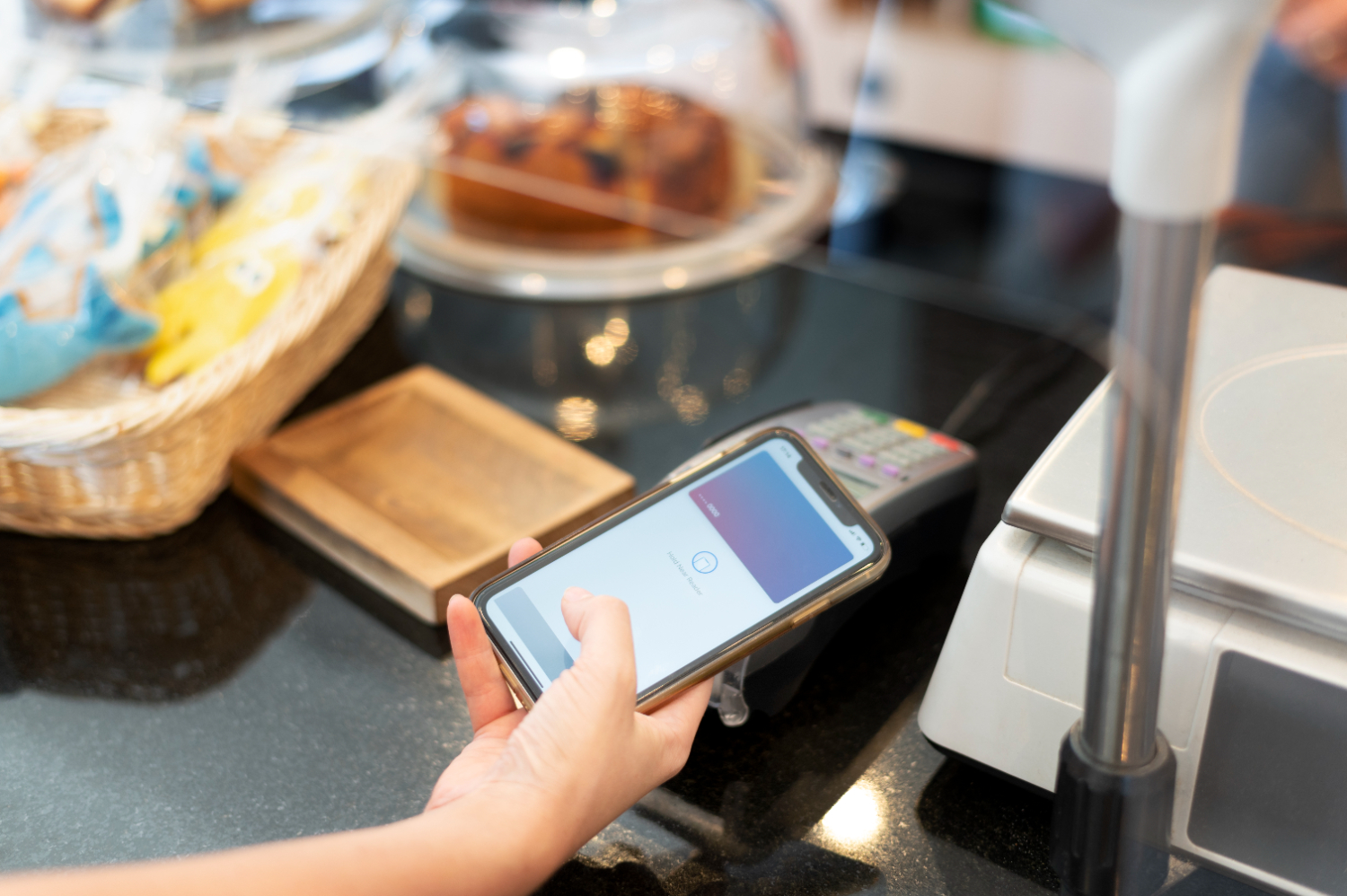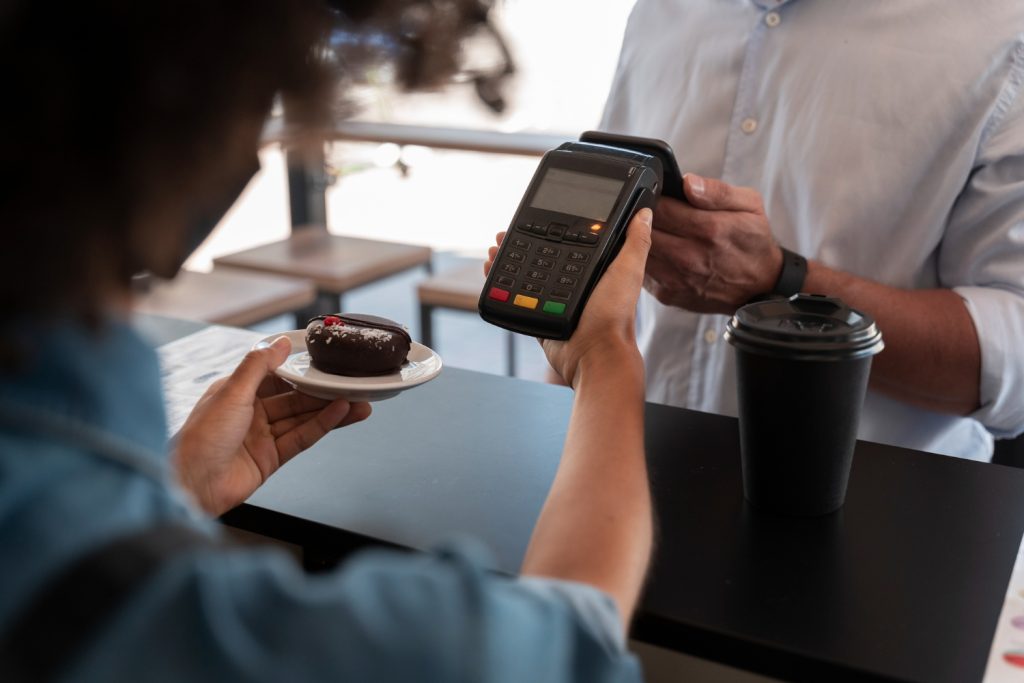
By Bella Zhang March 25, 2025
Bakeries offer more than just freshly baked goods and warm bread in the cutthroat world of small business. They are quick-paced, effective companies that need to make wise financial choices and streamline operations. How a bakery manages payments, particularly the costs related to card transactions, is a crucial factor that affects its profitability. Bakeries can lower transaction costs and improve their financial operations by implementing interchange plus pricing and utilizing contemporary bakery POS systems with integrated payment processing.
Understanding Interchange Plus Pricing
Understanding how you’re charged for every card swipe is crucial to managing expenses. Interchange plus pricing is a transparent fee structure that can make a significant difference in what a bakery pays for payment processing.
What Is Interchange Plus Pricing?
Interchange plus pricing breaks down credit card processing fees into two parts: the interchange fee (which goes to the card-issuing bank) and the processor’s markup. Unlike flat-rate pricing models, which charge a single fixed percentage for all transactions, interchange plus provides transparency. For example, if the interchange rate is 1.6% and your processor adds 0.3%, your total fee for that transaction is 1.9%.
This setup allows bakery owners to see exactly where their money goes and compare rates between processors to get the best deal.
Why Interchange Plus Matters for Bakeries
Every day, bakeries usually handle a large number of minor transactions. Even marginally increased fees can result in significant losses over time. Despite its apparent simplicity, flat-rate pricing often includes a buffer that favors the processor rather than the business owner. Interchange Plus is perfect for low-ticket, high-volume businesses like bakeries because it allows them to lower transaction costs by only paying the actual card fees plus a small markup.

Bakery POS Systems: A Foundation for Success
Behind every successful bakery is a system that keeps things running smoothly—from managing sales to tracking ingredients and handling payments. That system is often a modern bakery POS setup designed specifically for this industry’s unique needs.
What Are Bakery POS Systems?
Bakery POS systems are more than just digital cash registers. They are complete solutions that handle transactions, inventory, staffing, order management, and more. Designed with bakeries in mind, these systems help manage everything from morning rushes to special cake orders, all while collecting data that can improve decision-making.
With features tailored to baked goods, such as ingredient-level inventory and recipe costing, these systems offer a clear edge. Most importantly, they can be integrated with payment processors that offer interchange plus pricing, which supports smarter financial planning.
Choosing the Best POS for Bakeries
POS systems differ from one another. Reporting dashboards, customer profiles, real-time inventory tracking, and smooth payment integration are just a few of the powerful features that the top point-of-sale system for bakeries provides. It should be easy for employees to use during peak hours and flexible enough to accommodate both counter service and special orders.
When choosing a system, bakery owners should search for POS providers that offer integrations with multiple payment processors and support interchange plus pricing. Managing fees and improving the checkout process require flexibility and transparency.
Integrated Payment Processing and Its Impact
One of the most valuable components of a modern POS system is integrated payment processing. This feature ensures that payments and sales data are recorded in one place, which not only improves efficiency but also supports better financial insights.
What Is Integrated Payment Processing?
Integrated payment processing means the POS system and the payment terminal are connected. Transactions are processed through the POS, which automatically records payment details, applies taxes, updates inventory, and finalizes the sale without needing separate machines or software.
This setup eliminates manual entry, reduces human error, and speeds up the checkout process—especially important during peak hours in a busy bakery.
The Link Between Integration and Interchange Plus Pricing
Bakery owners have access to comprehensive reports that break down each transaction thanks to integrated systems. These reports display the specific interchange fees, the processor’s markup, and the cards that were used. Businesses that use interchange plus pricing need this level of detail in order to identify costly card types, track trends, and keep an eye on processing expenses.
This transparency helps bakeries manage expenses better, stay informed, and take steps to reduce unnecessary costs over time.
Reducing Transaction Costs Through Better Systems
Every penny counts in a small business, especially in food service. By selecting the right tools and pricing structures, bakeries can reduce transaction costs, improving profit margins without raising prices.
The Hidden Cost of Flat-Rate Pricing
Flat-rate pricing models often charge 2.6% to 2.9% per transaction, regardless of card type. While this model is simple, it can be more expensive in the long run, especially when customers use debit or low-fee cards that cost less to process.
Interchange plus pricing, when paired with a capable POS system, offers bakery owners the ability to pay lower fees for lower-cost transactions. Over weeks and months, this adds up to real savings—savings that can be reinvested into better ingredients, staff bonuses, or business expansion.
Automation and Efficiency
A large number of financial tracking and transaction handling tasks are also automated by bakery point-of-sale systems. These systems lighten managers’ and owners’ workloads by automatically calculating taxes and tips and integrating data with accounting software.
Automation reduces the chance of human error, provides consistent financial reports, and improves end-of-day reconciliation—all while helping businesses stick to the interchange plus pricing model with ease.
Practical Benefits for Bakery Owners
Implementing a modern POS system isn’t just about technology—it’s about improving every aspect of bakery management. From boosting trust to enabling smarter planning, the right system can make a significant impact.
Transparency and Trust
Customers appreciate honesty, and interchange plus pricing fosters that. When bakeries use bakery POS systems with integrated reporting, they can confidently explain pricing or answer questions about payment types. Internally, owners and managers can trust that the numbers in their reports match the actual costs.
This builds credibility both inside and outside the business, leading to better vendor relationships and improved customer satisfaction.
Better Financial Planning
These systems give bakery owners precise, up-to-date financial information, which helps them make better budgets. They are able to predict costs associated with card processing fees, identify best-selling items, and track seasonal sales patterns.
Armed with this information, owners can make better decisions about staffing, pricing, and inventory—further contributing to financial stability.
Streamlined Customer Experience
Speed and simplicity matter, especially when customers are grabbing coffee and pastries on the go. The best POS for bakeries supports fast checkouts, contactless payments, and loyalty rewards—all in one smooth interface.
A positive checkout experience keeps lines short and customers happy, which is essential for building repeat business.
How to Implement a POS System That Supports Interchange Plus
Switching to a new POS system or pricing model can seem daunting, but with a clear plan, bakery owners can make the transition smoothly and start seeing benefits quickly.
Step 1: Assess Your Current System
Begin by assessing your existing payment arrangement. If you’re utilizing a system that doesn’t offer interchange plus pricing or lacks proper integration, you are probably incurring higher fees than needed. Evaluate your daily transaction volume, existing rates, and reporting functionalities.
Step 2: Research the Best POS for Bakeries
Look for bakery-specific POS providers known for their reliability and support. Compare features, read reviews, and ask vendors if they offer payment processing partners with interchange plus pricing. Most top-tier systems will provide demos, which is a great way to see how they work in real time.
Step 3: Make the Switch
Once you’ve chosen your new system, plan the switch during a slow period to avoid disruption. Most providers offer onboarding and training, helping your team learn quickly. The initial setup might take time, but the long-term cost savings and efficiency gains are well worth it.

Real-World Example: Saving Big with Interchange Plus
Consider a bakery that receives $10,000 in credit card payments every month. That amounts to $290 in fees when using a flat-rate processor that charges 2.9%. They can save $110 a month, or $1,320 annually, by switching to interchange plus at an average rate of 1.8%, which will only cost them $180.
In addition to those savings, they can access comprehensive reports, streamline operations, and enhance the customer checkout experience by utilizing bakery POS systems that have integrated payment processing.
Looking to the Future
Bakery operations are evolving alongside technology. Customers expect faster service, digital payment options, and even online ordering. Choosing systems that can grow with these trends is vital for long-term success.
Contactless Payments and Digital Trends
Contactless payments, QR codes, and digital wallets are no longer future trends—they’re part of everyday life. Bakery POS systems that support these features keep your business modern and accessible. Combined with interchange plus pricing, they allow you to maintain profits even as consumer behaviors change.
Environmental and Efficiency Gains
Integrated payment systems also reduce paper usage and manual bookkeeping. Digital receipts, cloud-based reporting, and automated end-of-day summaries all help your bakery operate more sustainably and efficiently.
Final Thoughts
Bakery POS systems are essential for facilitating interchange plus pricing and enhancing the affordability and transparency of payment processing. The best point-of-sale system for bakeries with integrated payment processing allows bakery owners to streamline operations, cut down on transaction costs, and improve their financial judgment.
In today’s cutthroat market, clever pricing strategies and technology are not only useful, but necessary. The right tools can help you stand out from the competition, just like the ideal loaf of bread, whether you’re managing a small neighborhood bakery or a rapidly expanding chain.